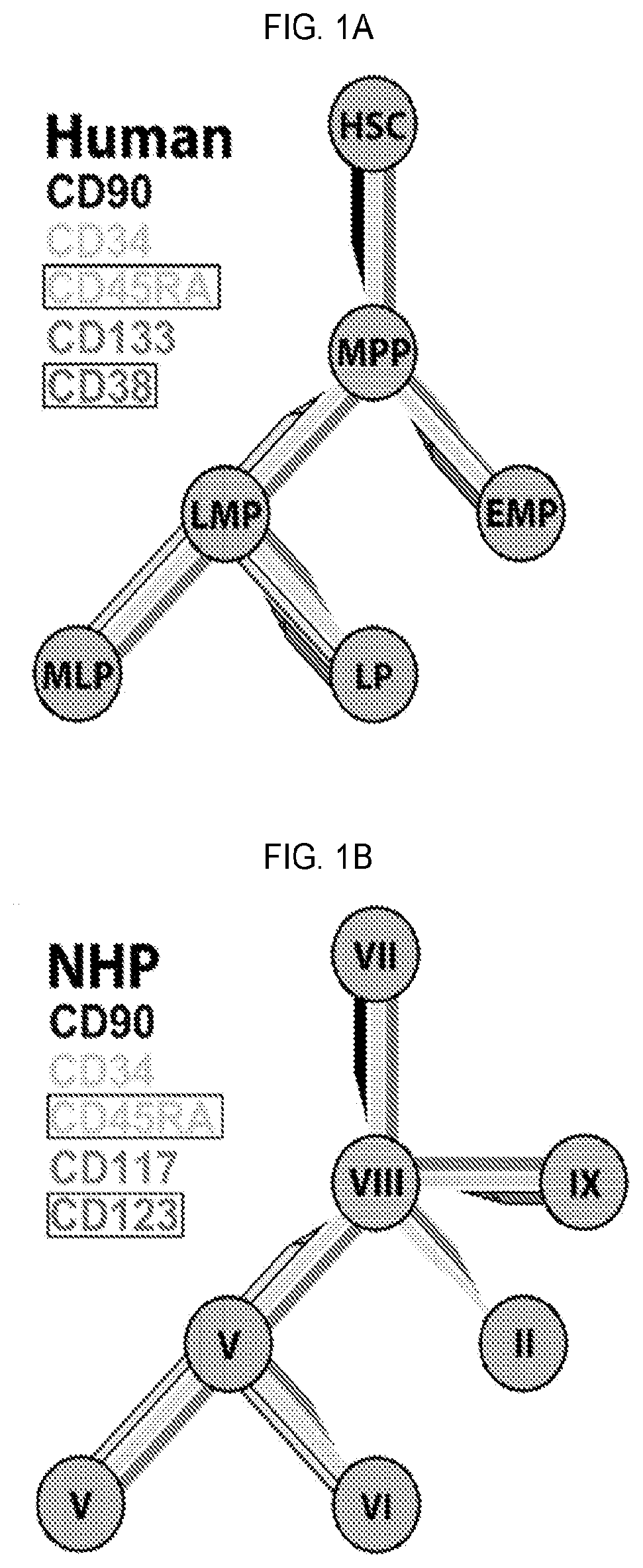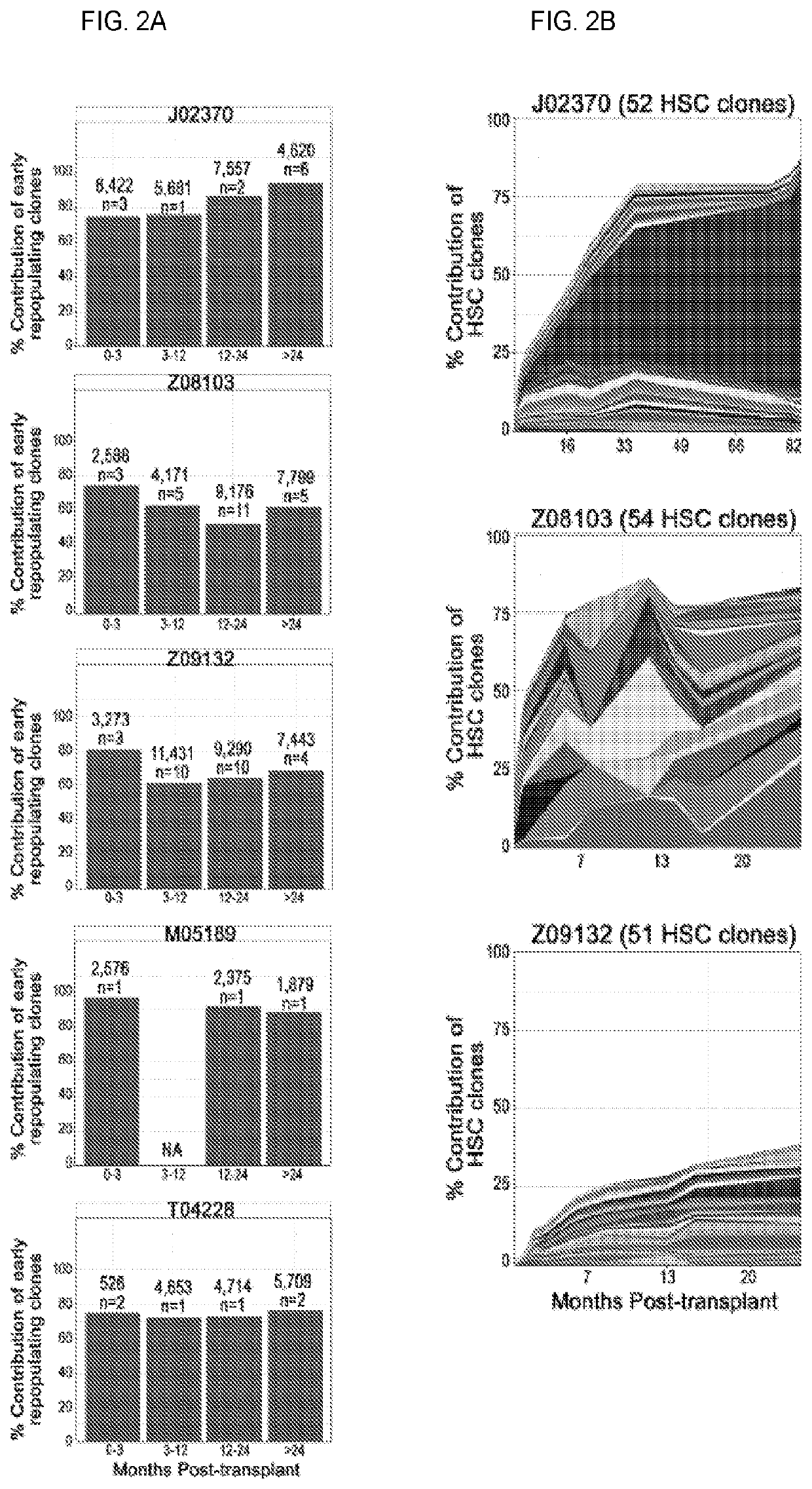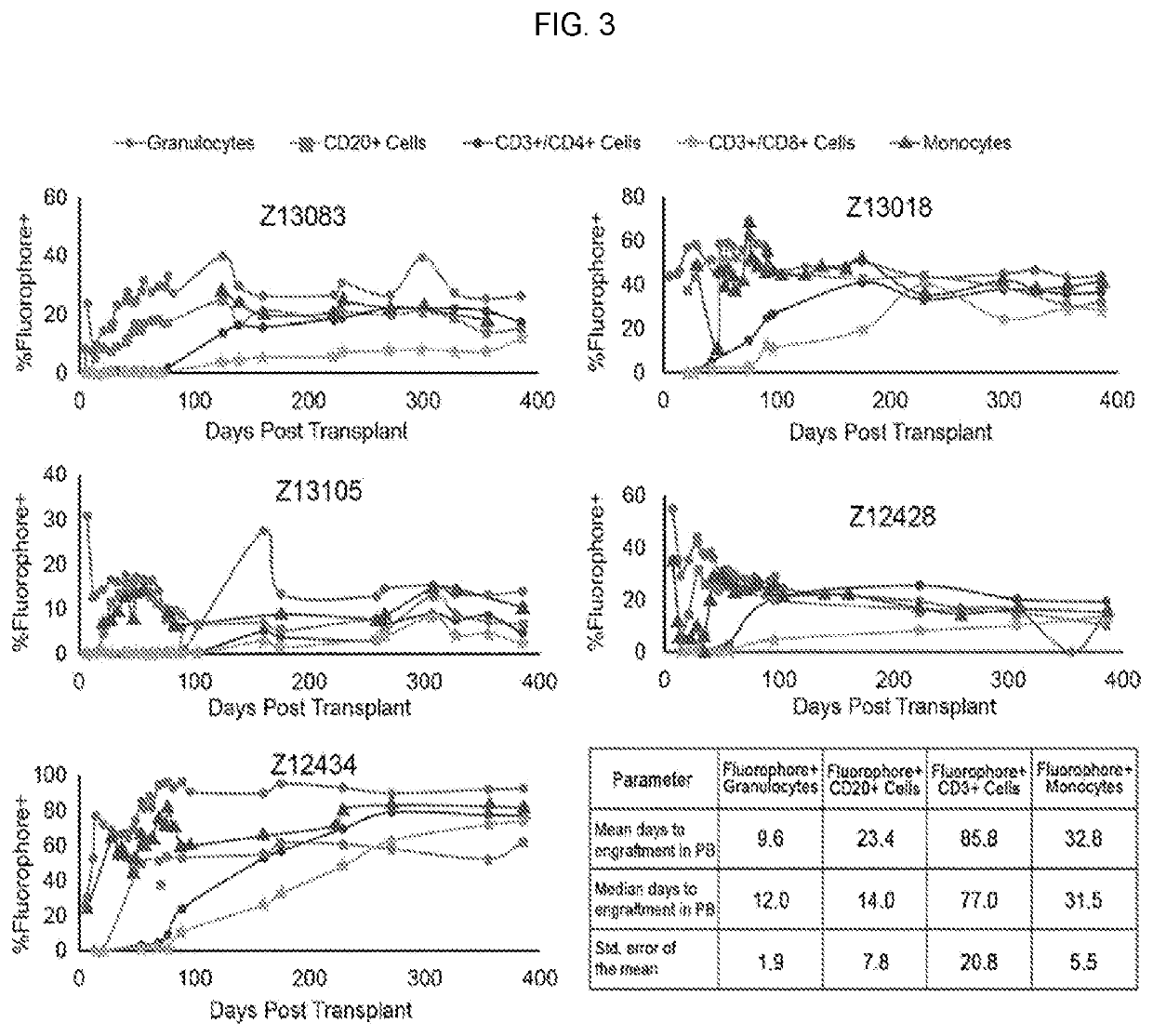Strategies to assess and/or produce cell populations with predictive engraftment potential
a cell population and engraftment potential technology, applied in the field of strategies to assess and/or produce cell populations with predictive engraftment potential, can solve the problems of inability to predict engraftment potential, inability to engraft, and inability to engraft, so as to improve manipulation and expansion of hsc, reduce manufacturing costs, and strong logarithmic correlation
- Summary
- Abstract
- Description
- Claims
- Application Information
AI Technical Summary
Benefits of technology
Problems solved by technology
Method used
Image
Examples
embodiment 12
13. A method or use of embodiment 12 wherein the SCF, TPO and FLT-3L or the SCF and IL-3 are recombinant SCF, TPO and FLT-3L or recombinant SCF and IL-3.
14. A method or use of any of embodiments 1-13 wherein isolating does not utilize markers other than CD34, CD45RA, CD90, CD117, CD123, and / or CD133.
15. A method or use of any of embodiments 1-13 wherein the isolating does not utilize CD3, CD7, CD10, CD13, CD14, CD33, CD38, CD41, CD56, CD105, CD127, CD135, and / or CD138.
16. A method or use of any of embodiments 1-13 wherein the stem cell population is CD34+ / CD45RA− / CD90+; CD34+ / CD45RA− / CD90+ / CD133+ or CD34+ / CD45RA− / CD90+ / CD117+.
17. A method or use of any of embodiments 1-13 wherein the stem cell population is CD34+ / CD45RA− / CD90+; CD34+ / CD45RA− / CD90+ / CD133+ or CD34+ / CD45RA− / CD90+ / CD117+ and has self-renewing capacity, multi-lineage potential, long-term engraftment capability, and predictably correlates with hematopoietic recovery after transplantation or radiation exposure.
18. A method...
embodiment 19
20. A method or use of embodiment 19 wherein the predictable correlation occurs with a cell dose of at least 122,000 cells / kg when administered to a subject.
21. A stem cell population formed according to a method of any one of embodiments 1, 2, 3, and / or 7-17.
embodiment 21
22. A stem cell population of embodiment 21 that is genetically-modified.
PUM
| Property | Measurement | Unit |
|---|---|---|
| time | aaaaa | aaaaa |
| time | aaaaa | aaaaa |
| concentrations | aaaaa | aaaaa |
Abstract
Description
Claims
Application Information
 Login to View More
Login to View More - R&D
- Intellectual Property
- Life Sciences
- Materials
- Tech Scout
- Unparalleled Data Quality
- Higher Quality Content
- 60% Fewer Hallucinations
Browse by: Latest US Patents, China's latest patents, Technical Efficacy Thesaurus, Application Domain, Technology Topic, Popular Technical Reports.
© 2025 PatSnap. All rights reserved.Legal|Privacy policy|Modern Slavery Act Transparency Statement|Sitemap|About US| Contact US: help@patsnap.com



